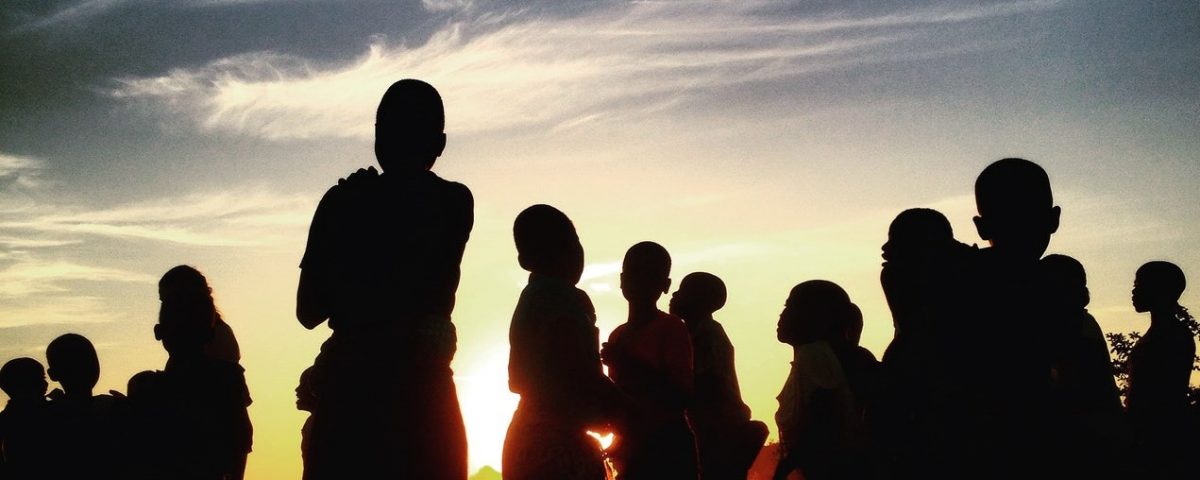The future of philanthropy – towards a global civil society realising the love for humanity
03 Nov 2021
This blog originally appeared on the European School of Governance’s website.
Philanthropy is said to be stuck in venture philanthropism. “Making the world a better place” became a competitive market. The donors and the doers alike are searching for new ways to realise the love for humanity in new shapes. Community philanthropy and social value philanthropy offer promising perspectives of growing a shared understanding of the future of philanthropy, an emerging future where the experience is relational and not transactional and where tech is facilitating and not limiting.
If I was Mr Evil and I did not want the world to change, I would exactly know what to do. I would engage. I would become a venture philanthropist. I would join the fight against climate change and the loss of biodiversity, the fight against poverty and domestic violence. I would support the good cause of course. I would be one of them aiming at “making the world a better place.” However, I would not want to lose my privileges and the power structure which sees me on top of the pyramid. I would engage with civil society and champion the generation change. I would encourage them to become social entrepreneurs setting up their own little NGO running their own little projects far away from me. I would give them money, not too much though, just enough to keep them busy and nurture the illusion that change was possible. My donation however would not be enough to realise any economies of scale. I would impose a bit of cumbersome bureaucracy to report back to me about the use of my money and the evaluation of the achievements. I would measure impact in large databases showing the effectiveness and efficiency of every single project. I would call for pitches making sure that more and more small groups are running after the small donations. I would encourage all my friends to join in with a bit of money and do the same. And then I would give awards to the heropreneurs who achieved so much with so little based on self-exploitation. My awards would come with additional money, not much though, yet enough to stir up the competition of those small NGOs. My awards would be based on criteria sustaining the competitiveness of the field. And they would compete. And I divide and rule.
Philanthropy is, going to the ancient Greek root of the word, the love for humanity. It is the love to what defines and connects us as fellow human beings. It is an invitation to compassion, an invitation to welcoming our being to the world. It is an invitation to return our locus of value to rest in love. It is an invitation to rediscover our human potential and creativity, not to run for achievements, the money, the status, or the power we think we hold, but to become part of a humanising world. It is an invitation to trust. It is an invitation to find compassion and ease with yourself, with the living world, and with your fellow human beings.
The shape philanthropy took over the years however suggests something else. It suggests a kind of a dialectic process, mirroring the societal context we are in. And though philanthropy had a rather stable form for most of history we witness an accelerating change, like in the rest of society. And we may be even tempted to count the different shapes ranging from philanthropy 1.0 to philanthropy 4.0.
Solidarity by giving to the poor may be called philanthropy 1.0, also known as charity. Those who have, support those who have not. It is a widespread almost universal moral norm in all religions, all cultures, and all societies. Some cultures are very tacit and discrete, for example in Islamic cultures, where one hand should not know of the other hand giving. And there are very loud forms where at charity dinners oversized cheques are presented to the camera capturing the who is who and how much, celebrating the very act. Oftentimes intermediaries are involved, churches, INGOs, or charitable foundations. There has been a profound critique along the lines of the money that stayed with these intermediaries. Yet, the transforming critique came with what was called learnt helplessness. The ones receiving donations were kept by those donations and the structures they manifested in their very position remaining the receiving poor.
Philanthropy 2.0, also known as venture philanthropy, overcame the trap of charity. Helping the disenfranchised to help themselves became the new strategy, supporting those who provided solutions to the problems. They were called social entrepreneurs. Venture philanthropy brought the business paradigm of the West to the last corner of the world, competing for better solutions. The language changed. All of a sudden, a lot of management jargon was around, talk about social innovation, impact, and disruption, empowerment, leadership skills and systems change. The charity industries had become a proper market for competitive projects “making the world a better place.”
Though it sounds good, philanthropy 2.0 does not look good, neither looking at the classism that comes with heropreneurship nor looking at the actual bottom line. While there are certainly wonderful projects leading to desirable outcomes, more projects are failing to improve anything, and in the big picture, the undesirable trends are unbroken. The challenges of the Anthropocene in the 21st century grow while the exhausted social heropreneurs give in. Exactly like Mr Evil had laid it out. The global power structure remains unchallenged and unchanged, and the planet is heading towards collapse.
“Wherein lies the danger grows also the saving power”, wrote the German poet Friedrich Hölderlin. Philanthropy 3.0, also known as community philanthropy, can be characterised by two ideas that change the philanthropic practice fundamentally. First is letting go of strict structures of project management, engaging in open development processes rather than rigid project-based programme management. This is not only moving from project evaluation to project appreciation. It is moving from a focus on getting things done to engaging with a focus on letting things grow.
The second aspect characterising community philanthropy is moving away from competition. It is moving away from the competition of ideas and the clash of concepts towards growing a shared understanding. It is a delight to see how this works in practice when larger foundations with a wide project portfolio break open the problem-defined silos like “poverty”, “clear water”, “domestic violence”, “women rights”, “girl’s schools” etc. What emerges is a conversation in the in-between, a dialogue exploring what all these efforts have in common, what defines and connects us. It is civil society at its best. In the in-between, we rediscover our humanity. And we realise to what extend community development is an expression and a manifestation of our shared understanding of our human potential and our humanity, locally as well as globally.
While philanthropy 3.0 grows solidarity on the ground overcoming the competition of the social heropreneurship business, philanthropy 4.0, also described as social value philanthropy, has the capacity to take Mr Evil out of the game. In the long run, philanthropy 4.0 realises financial independence by using blockchain solutions for local money creation based on promissory notes connected to social value realisation. While an ordinary Dollar, Pound or Euro bill has no memory, a token of a cryptocurrency knows exactly its history. It knows what smart contracts it has been part of what was bought with it. It tells a story, preferably of social value creation.
Though philanthropy 4.0 could be thought of as being independent of community philanthropy, it would tremendously benefit from its capability to grow a shared understanding of what social value is and from its capacity to connect different projects, endeavours, and communities sharing a common currency of social value.
Today, the prevalent model is still philanthropy 2.0, and we see a lot of frustration coming with it, the feeling of being stuck and the desire to overcome it. We see pockets of the future realising philanthropy 3.0 and 4.0. And though these look like desirable futures, we may want to avoid jumping to the next idea and rather growing a shared understanding of the future of philanthropy, even reaching out to Mr Evil who may upon losing the illusion of his power, his status, and his money finds the courage to trust our human potential and our humanity realising the existentiality of love. We may become philanthropists together, loving humanity.
By: Louis Klein, an internationally recognized expert in the field of systemic change and complex project management.


